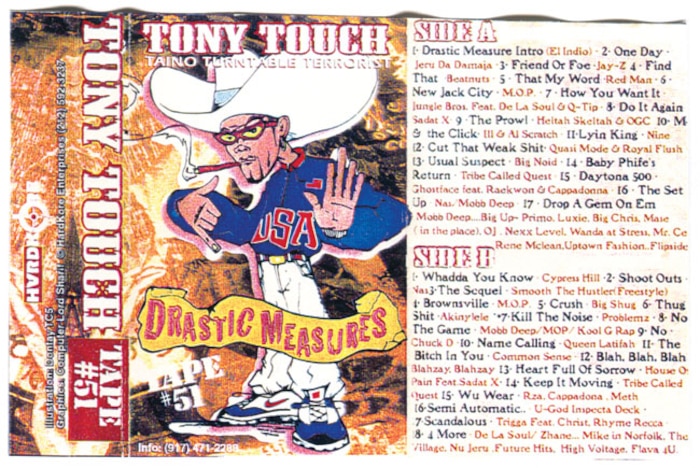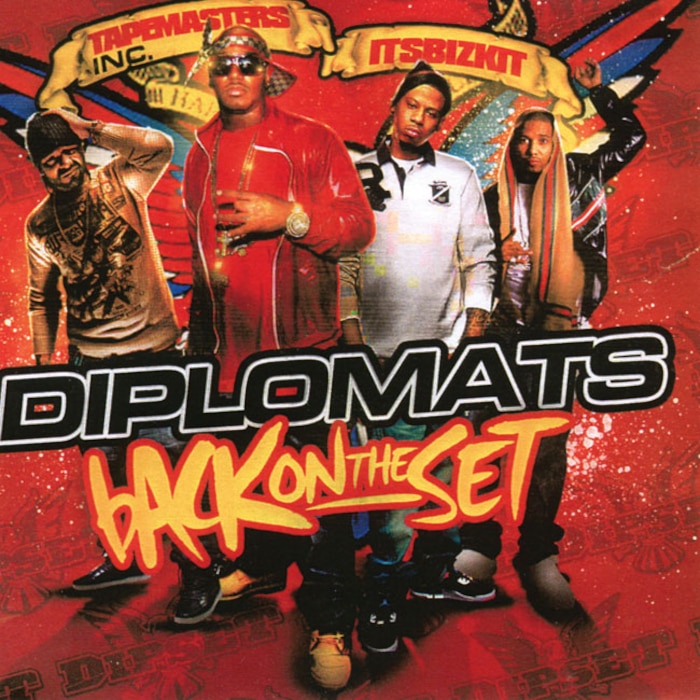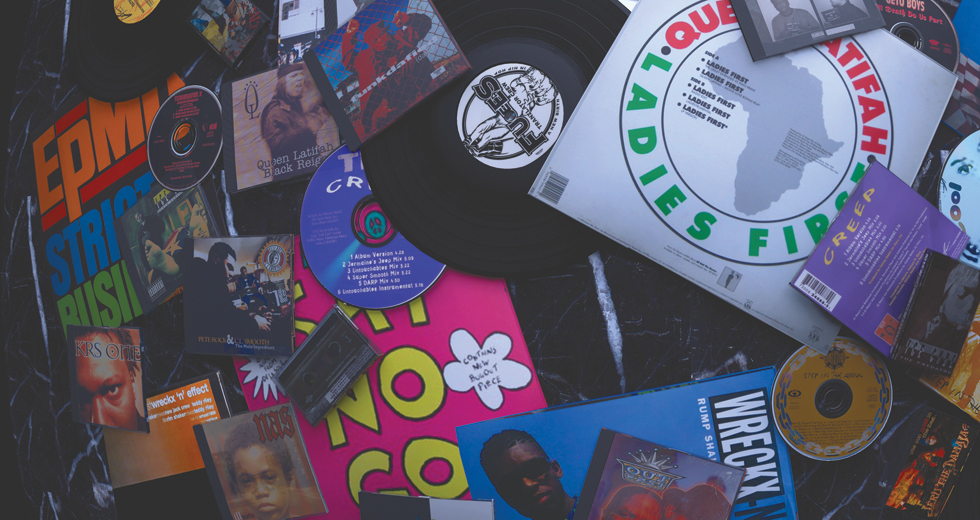A (Not At All Definitive) History of Hip Hop Mixtapes
From dubbed cassettes to burned CDs to 128kbsp mp3s, Noz details how mixtapes became – and remain – an integral part of hip hop.
The history of hip hop is told by the tale of the tape. About a decade after a posse of Dutch scientists figured out how to condense once-enormous magnetic recording spools into the compact space of a cassette, a Jamaican immigrant named Kool Herc birthed – in the community center of a Bronx apartment complex – what would eventually become a multibillion-dollar branch of the music industry. But the rise of these two inventions are inexorably linked, particularly in New York City.
Cassettes could move great distances and with stealth. They could fit into a pocket or fill a duffle bag, and they could be replicated en masse with ease.
One of the tremendous truths that’s often overlooked about hip hop’s rise is that it represents one of the then-rare instances in which a localized folk movement morphed into large mainstream one while remaining relatively undiluted. But like any small culture in the pre-Internet age, it could only move so far on its own. The vinyl record, the format most commonly identified with early hip hop (partially due to a million moms making semi-ironic wiki-wiki scratching motions) certainly did quite a bit to put hip hop out there. But vinyl was a clunky and expensive vehicle, one requiring vast networks of pressing plants and distributors. Cassettes, on the other hand, could move great distances and with stealth. They could fit into a pocket or fill a duffle bag, and they could be replicated en masse with ease.
The recordings would deteriorate rapidly as listeners dubbed them for friends and friends dubbed them for acquaintances, each playback burying the sounds further in hiss. Thus these stories were told through slowly self-destructing messages, like a child’s game of telephone. “Never put me in your box if your shit eats tapes,” Nas once warned, but that fragility only amplified the mystique of the format.

“Home Taping Is Killing Music” goes the oft-parodied slogan; but while it might’ve been killing the music industry, the cassette was also giving legs to many niche musical movements that otherwise would have remained frozen in place. Not just hip hop but metal, hardcore, industrial, New Age and more. It’s probably not a coincidence that these genres all emerged during the late ’70s and ’80s as the cassette tape rose in prominence.
On an internal level alone, the format crams a ton of motion into a small cavity, rotating hundreds of feet of reel through a 4” x 3” rectangle by way of more internal moving parts than any other music-storage object. Two playback devices that were coming into popularity around the same time as hip hop – the Walkman and the boombox – capitalized on this portability, both seemingly tailor-made for the sort of urban-warrior lifestyle that hip hop glorified. A dub of a tape could travel hundreds of miles and in the process spawn off a dozen more copies. New Yorkers could slide dubs to out-of-town cousins. Bleary-eyed suburbanites could record late-night radio shows off the airways and spread those static-blanketed secrets outward.
The relative ease of re-recordings and low duplication cost opened up new and extensive options for self-documentation to artists and listeners alike.
In hip hop’s early years, cassettes served as its document of record through bootleg recordings of old-school rap routines and DJ sets. The relative ease of re-recordings and low duplication cost opened up new and extensive options for self-documentation to artists and listeners alike. Official Cold Crush Brothers recorder Elvis Moreno, AKA Tape Master, would get access to plug his tape recorder directly into the soundboard, while an unsanctioned partygoer might just place their box somewhere in the crowd and hit the record button. Dozens of tapes of prominent crews like The Furious Five and The Crash Crew multiplied like rabbits from there on out, sold at shows and swapped through quiet networks of traders and collectors. And even while New Jersey interlopers The Sugarhill Gang burned up the airwaves and sold out the vinyl bins with “Rapper’s Delight,” real heads knew that mainstream releases offered only an approximation of what it was really like. There was honesty in the live dubs; producers and rappers hadn’t yet figured out how to replicate that feeling in a studio setting.

While hip hop centers with weaker industry ties like Oakland and Houston developed vast independent micro-industries around professionally produced, barcoded, and distributed cassette-only releases in the ’90s, the New York indies of that era never seemed to prioritize the format for official releases. Most of the New York rap music that was manufactured by larger independent labels was, and still is, difficult to come by on tape. Even as ’90s emporiums like Mix Kings industrialized the underground production process, the distribution network tended to operate wholly separate from record distributors and chain stores, moving instead through street vendors and niche shops.
Cassettes came with an implicit stamp of insider status.
As a major-label hub, New York City experienced a push and pull between its underground and its mainstream music industry – for many years, cassettes played the middleman. Tapes served as a stepping-stone: you could cut a four-track demo and shop it to a label in the hopes of eventually transitioning into a more professional vinyl project, or later to a CD.
Yet cassettes came with an implicit stamp of insider status. It wasn’t until the late ’90s that mixtape purveyors like DJ Clue would start (loudly) throwing around the phrase “exclusive” to punctuate the new and unheard tracks that they were breaking, but there was always a subtext of exclusivity to the underground-rap-cassette experience. Copping or dubbing these tapes instilled the sensation of a certain special street-level awareness amongst consumers – you had to be in the know to some degree. And in some cases you had to have the right amount of money.

“The people that was buying my customized tapes [in the ’70s] were the scramblers, the dealers, people that had money,” Grandmaster Flash told MTV.com in 2007. “I was making a couple thousand dollars a month, easy, just doing this.” Harlem DJ Brucie B has claimed that old-school drug kingpins like Alpo and Rich Porter would pay him upwards of three figures a piece for his blend tapes in the late ’80s. Though the live-taping scene had inexplicably dissolved by the end of that decade, DJ-mixed studio tapes continued to thrive well into the ’90s, with DJs like Brucie and Ron G, whose tapes prefigured the mashup trend by dropping R&B acapellas on top of hip hop beats.
Over time, tapes would help directly launch careers. In the later part of the decade, DJs like Clue began to move away from serious mixing and blending in favor of acting as makeshift A&R men. Their tapes provided a developmental ground for the careers of stars like DMX and the Lox. Mixtapes had effectively supplanted the demo process. Major labels even tried their hands at co-opting that process, releasing proper albums from the likes of Clue and radio heavyweight Funkmaster Flex that were meant to synthesize the mixtape experience for a mainstream audience.
For a while, burned CDs moved via the same network. But in time, technology would devour the entire scene.
Reflecting this new model, mixtapes began to shift their focus away from the DJ and toward the rappers themselves. By 2000, artist-driven underground tapes by the likes of 50 Cent and the Diplomats dominated the tape scene. Though DJs like Whoo Kid were still playing host, they were no longer the center of attention. These were effectively DJ-curated street albums. The artists had taken over the scene for a reason: to reap the freedom that came from the format. The commercial prime of the mainstream recording industry was coming to a close, so labels were becoming more selective about who and what would be getting a release date; at the same time, sample-clearance budgets were dwindling. Major-label and unsigned artists alike used tapes to strong-arm their brands and musical visions into the marketplace. Anything and everything was fair game for beat jacking – from mainstream hits to old-school classics – and the best of these artists could morph them into completely original songs.
Of course, these artists were only making “tapes” in name. Technology had already outmoded the cassette prior to this artist-driven explosion. CD-R burners and Internet file sharing had already become ubiquitous. For a while, burned CDs moved via the same network, with the most-savvy consumers ripping them from and uploading to MP3 trading posts like Soulseek. But in time, technology would devour the entire scene. Freebie digital emporiums like Livemixtapes and Datpiff pushed the street vendors and hand-to-hand dubs out of the mixtape market almost entirely. Still, the name stayed the same. Even kids of today who are young enough to have never seen a true-to-life cassette are still running around talking about the latest “mixtapes.”

The word "tape" speaks to purity, a word-of-mouth shadow industry that will hopefully always exist in hip hop. In a way, the tape humanizes music distribution. Underground tapes weren’t mass-produced industry-sanctioned objects, but rather physical artifacts with handwritten or photocopied labels and artwork, giving off the distinct impression that the actual item you were listening to had directly passed through the hands of its creator. Even in their modern digital incarnations, many mixtapes still exude a similar warmth and aura with little polish, indifferent mixing and mastering, and hastily thrown-together artwork.
Today the tapes of decades past are still exchanging hands – digitally. Dig deep enough into the Internet and you’ll find the lo-fi remnants of underground classics from the likes of Flash, Brucie and Clue still floating around through YouTube rips, Mediafire links, enormous torrents, eBay auctions and vast classified networks of international tape traders. Like everything else on the planet, these tapes now travel more rapidly than they did in their own time, and the cost of entry is much lower, but they still move mostly in silence – save for the new layers of lossy hiss that they continue to accumulate in the process.
A version of this article appeared in The Daily Note, a free daily newspaper distributed in New York during the 2013 Red Bull Music Academy.

